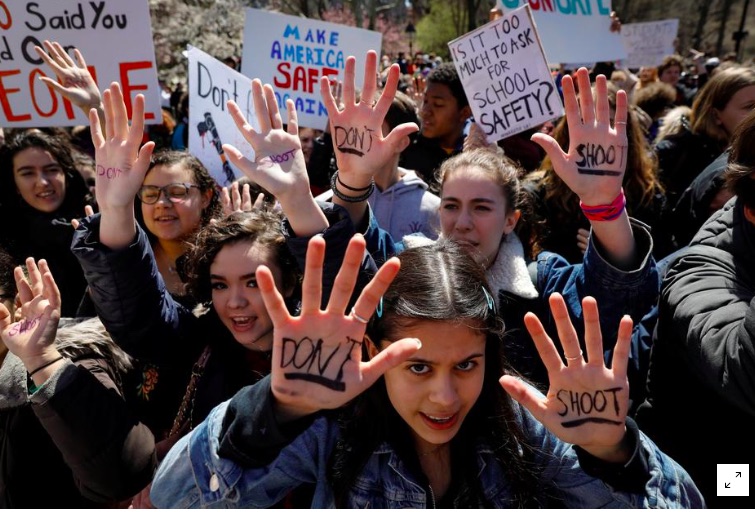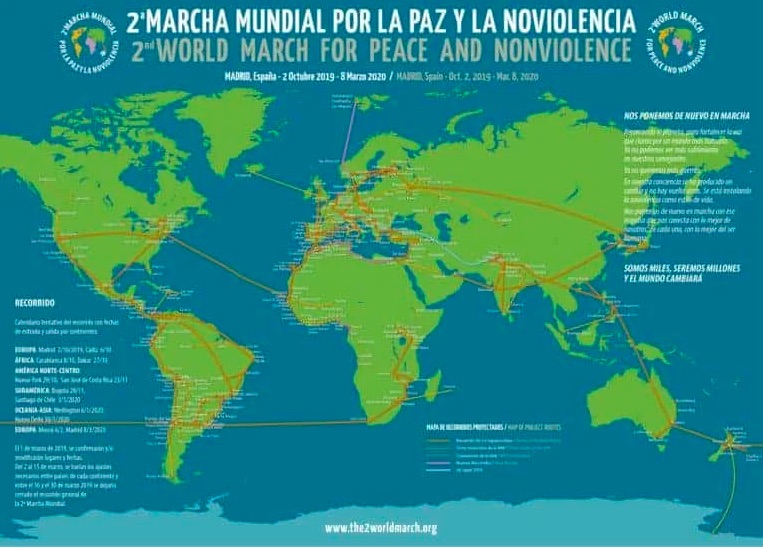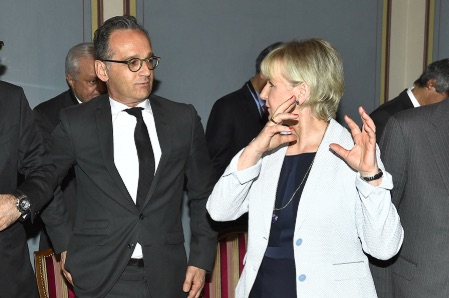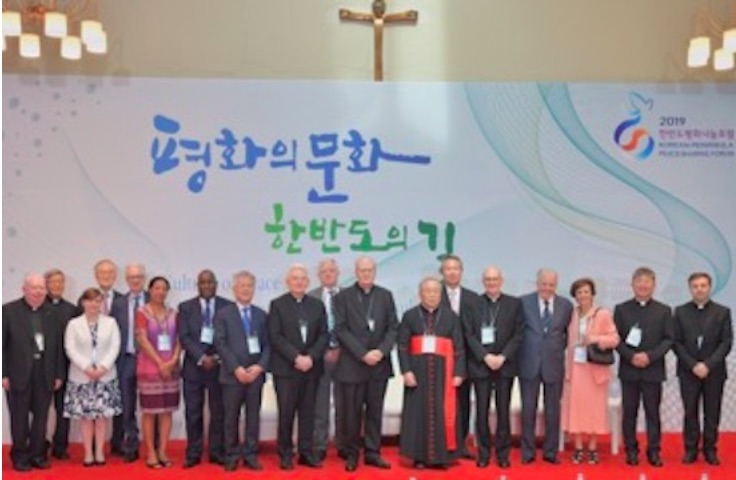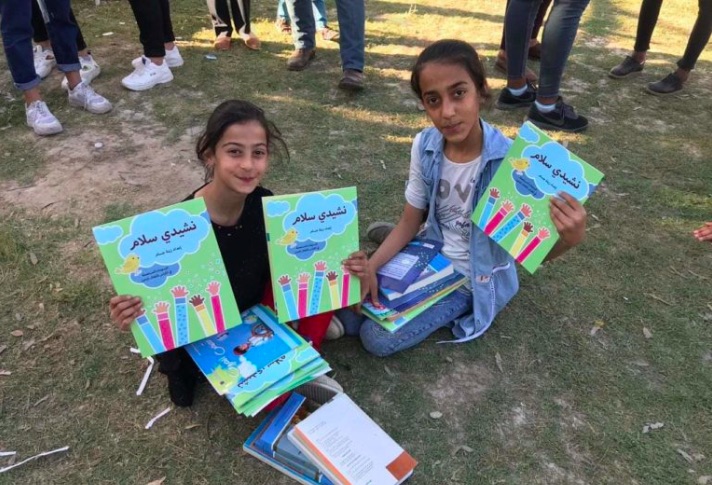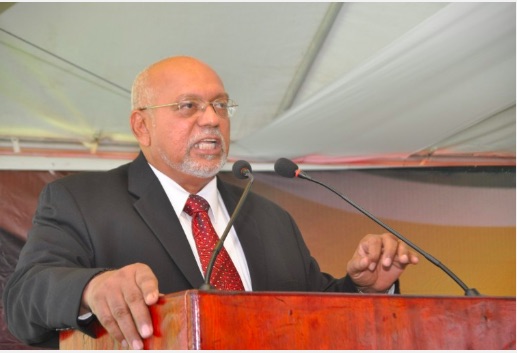An article from The Mainichi
The following is the full text of the Peace Declaration read on Aug. 9 by Nagasaki Mayor Tomihisa Taue at a ceremony to mark the 74th anniversary of the atomic bombing of the city.
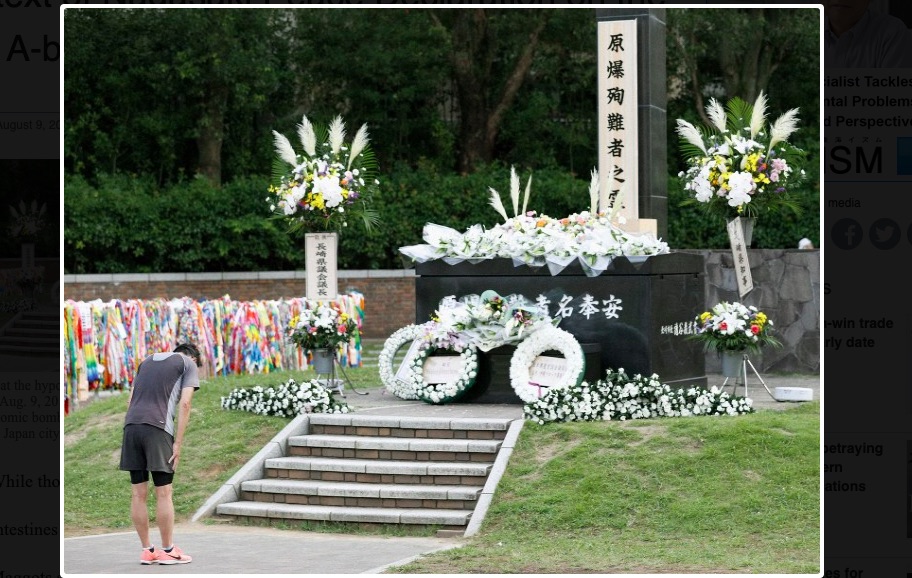
A man bows at the hypocenter cenotaph in Nagasaki on Aug. 9, 2019, the 74th anniversary of the U.S. atomic bombing of the southwestern Japan city. (Kyodo)
Close Your Eyes and Listen
While thousands of arms and legs were torn off
Intestines drooping out
Maggots swarming in bodies,
Those still breathing searched for loved ones
And cremated the dead they found.
The smoke of burning corpses rose into the sky
And innocent blood stained the water of Urakami River.
Leaving only keloid scars, the war finally came to an end.
But
My mother and father are gone.
My brothers and sisters will never return.
People are weak and quick to forget;
They repeat the same mistakes again and again.
But
This one thing must never be forgotten.
This one thing must never be repeated
Under any circumstances whatsoever…
This poem was written by a woman exposed to the Nagasaki atomic bombing at 11:02 a.m., August 9, 1945. Seventeen years old, she lost her family and suffered serious injuries. The poem expresses her fervent belief that no one else in the world should ever have to experience the same tragedy.
The atomic bombs were built by human hands and exploded over human heads. It follows that nuclear weapons can be eliminated by an act of human will and that the source of that will is, without question, the mind of each human being.
The present world situation involving nuclear weapons is extremely dangerous. The opinion that nuclear weapons are useful is once again gaining traction. The United States is developing smaller, more manageable nuclear weapons, and Russia has announced the development and deployment of new nuclear weaponry. Moreover, the Intermediate-Range Nuclear Forces (INF) Treaty that ended the cold war arms race is facing dissolution, just as the continuation of the Strategic Arms Reduction Treaty (New START) is imperiled. The achievements of humankind and the results of our longstanding efforts to rid the world of nuclear weapons are collapsing one after another, and the danger of a nuclear calamity is mounting.
Have the desperate appeals of the atomic bomb survivors, endeavoring to ensure that the living hell caused by nuclear weapons is “never repeated,” failed to reach the ears of the world?
(Continued in right column)
Can we abolish all nuclear weapons?
(Continued from left column)
The answer is no. There are many people in the United Nations, in governments and municipalities, and especially in civil society groups including the atomic bomb survivors who share the same opinion and are speaking out.
As a collection of small voices, civil society groups have shown the power time and again to change the world. The testing of hydrogen bombs in the Bikini Atoll in 1954 stirred up a wave of protests that swept across the globe and resulted in the conclusion of test ban treaties. Similarly, the power of citizens movements played an important role in the conclusion of the Treaty on the Prohibition of Nuclear Weapons in 2017. The power of a single individual is small but by no means weak.
I call out to civil society throughout the world.
Let us continue to discuss our experiences of war and the atomic bombings and pass the information on to future generations. Knowledge of the horror of war is an important first step to peace.
Let us continue to promote trust between people across country borders. The bridges of trust built by individuals will help to prevent the outbreak of war due to national conflicts.
Let us inform our children about the importance of understanding the pain of others. That will sow the seeds of peace in children’s hearts.
There are many things that we can do in the cause of peace. Let us avoid despair and indifference and continue to cultivate a culture of peace. Let us raise our voices and insist that nuclear weapons are unnecessary.
This is the big role that all of us can play, however small we may seem.
Leaders of the world. Visit the atomic-bombed cities and see, hear and feel what happened under the mushroom cloud. Imprint in your minds the inhumanity of nuclear weapons.
Leaders of the nuclear states. The Treaty on the Non-Proliferation of Nuclear Weapons (NPT) will reach its fifty-year milestone next year. All the nuclear states should recall the meaning of the treaty, which promises to eliminate nuclear weapons and compels each country to fulfill that duty. I appeal to the United States and Russia, in particular, to assume responsibility as nuclear superpowers by demonstrating to the world concrete ways to drastically reduce nuclear stockpiles.
I also appeal to the Japanese government. Japan has turned its back on the Treaty on the Prohibition of Nuclear Weapons. As the only country in the world to have experienced the devastation caused by nuclear weapons, Japan must sign and ratify the Treaty on the Prohibition of Nuclear Weapons as soon as possible. As a means to that end, I ask Japan to seize the trend toward denuclearization on the Korean Peninsula and to initiate efforts to make northeast Asia a nuclear-free zone where all countries coexist under, not a “nuclear umbrella,” but a “non-nuclear umbrella.” And above all, I ask the Japanese government to uphold the spirit of “never resort to war” enshrined in the Japanese Constitution and to take the lead in disseminating that spirit around the world.
The average age of the atomic bomb survivors has exceeded 82. I ask the Japanese government to adopt further measures to support the aging survivors and take steps to assist the people who were exposed to the atomic bombings but are yet to be recognized as survivors.
As a city exposed to nuclear devastation, Nagasaki will continue to support the people of Fukushima, who are still struggling with radioactive contamination eight years after the nuclear power plant disaster.
My heartfelt thoughts go out to the people who perished in the atomic bombing, and I declare Nagasaki’s determination, along with Hiroshima and people everywhere committed to peace, to strive relentlessly for the abolition of nuclear weapons and the realization of lasting world peace.
